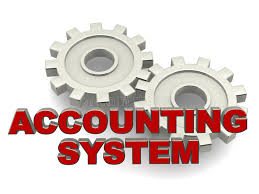The process of analyzing financial statements involves rearranging, comparing, and measuring the significance of financial performance and operating data. Meanwhile, how you set your financial goals determined the level of your financial performance. Therefore, this article explained in detail various financial performance measures and indicators from a financial standpoint and how they can be used to grow businesses. Meanwhile, with a few financial performance pdf in this article, you will have more insight into this topic.
Financial Performance
It is the means of measuring the results of a firm’s policies and operations in monetary terms. We can use it also to measure a firm’s overall financial health over a given period of time. But, similar firms can be compared across the same industry or industries or sectors in aggregation using financial performance.
Basically, all financial performance measures are taken in aggregate such as operating income or revenue from operations. The financial position of a firm at a given point in time is determined by the help of the financial analysis of the firm. However, financial performance analysis involves the use of financial statements. And these financial statements is the collection of data that is organized according to logical and consistent accounting procedures.
Thus, the word financial performance statements are generally referred to as three basic statements: the Balance Sheet, income statement, and cash flow statement.
See More: Financial Independence: Easy tips to retire early + free ebooks.
What is Financial Performance Analysis?
With the question, what is financial performance analysis, what comes to our mind?. Anyway, financial performance analysis is the interpretation of financial statements in such a way that it covers full details of the profit and financial health of a business. The financial analyst program provides vital information on financial analysis. They make this possible by using a spreadsheet to analyze historical data and projections regarding the company’s future performance.
What Are Areas Of Financial Performance Analysis?
Financial analysts usually assess the firm’s production, productivity performance, profitability performance, liquidity performance, working capital performance, and fixed assets performance.
Note, the fund flow performance and social performance are also assessed by these financial analysts. However, below are the various financial ratios analysis.
- Working Capital Analysis.
- Financial Structure Analysis.
- Activity Analysis.
- Profitability Analysis.
Read Also: Marketing Information System: A Detailed Guide.
Why Is Financial Performance Important For Organizations?
Measuring financial performance for any business or organization is ultimately a measure of its success. Therefore, one of the most important tasks successful business owners undertake is monitoring their financial performance on a regular basis. Organizations that understand where their business currently stands and where it’s heading using financial performance measures hold a huge advantage.
Nevertheless, financial performance help an organization in the following five major ways:
- Manage business uncertainty and risks.
- It Helps Organization stay ahead of their competitors who fail to take advantage of financial performance measures.
- With financial performance, organizations can make better business decisions and improve their business’s performance over the long term.
- The organization can identify any trends, strengths, weaknesses, and areas of opportunity.
- Help in the good management of cash flow.
See More: Financial Literacy: All You Need To Know + Free ebooks.
Financial Performance Measures
By now, you should understand that it is a way to measure an organization’s or business’s overall soundness. Understanding the need for financial performance is the first step that will lead you to where you are going.
Nevertheless, there are ways that technology can take everything you need and deliver it to you perfectly. That is you track some primary key performance indicators (KPIs) using automation software to review, measure, and track these indicators.
Most important metrics found in the financial statements every manager within an organization should understand:
#1. Gross Profit Margin
Gross Profit Margin is the profit ratio that measures the amount of cash left after subtracting the cost of goods sold out. The cost of goods sold refers to the direct cost of production with the exclusion of operating expenses, interest, or taxes.
#2. Net Profit Margin
Net Profit Margin is the profit ratio that measures the percentage of cash left after subtracting the total business cost plus operating expenses, interest, and taxes. This includes the profitability for the business in general, unlike Gross Profit Margin.
#3. Working Capital
Working Capital is the measurement of business available capital for financing business everyday activities or operations. It is always equal to current assets minus current liabilities.
#4. Current Ratio
The Current Ratio is a monetary ratio that helps you to know if the business can pay for its short-term obligations with its current assets and liabilities. This equals current assets divided by current liabilities.
#5. Quick Ratio
The Quick Ratio is another liquidity or monetary ratio an organization uses to measure if they are able to pay for their short-term obligations. We can also refer to this as the acid test ratio which equals current assets minus inventory and divided by current liabilities.
#6. Leverage
You can refer to this also known as Financial performance leverage or equity multiplier, and it is the use of debt to buy assets. The multiplier stands as one of the equities used to fund all the assets.
But, if the debt increases, the multiplier increases also, and this is used to demonstrate the leverage impact of the debt. When this happens, the risk of the business increases. Leverage equals total assets divided by total equity.
#7. Debt to Equity Ratio
For us to measure how much an organization funds itself, we use equity and debt. This also gives knowledge of business shareholders’ ability to use equity to cover all business downturn debts. Debt to Equity ratio equals total debt divided by total equity.
#8. Inventory Turnover
In inventory Turnover, the efficiency ratio is used to measure how many times in each accounting period the organization sold its entire inventory. It sheds more light on whether an organization has inventory in excess in relation to its level of sales. It equals the cost of sales divided by the beginning and ending inventory divided by 2.
#9. Total Asset Turnover
The Total Asset Turnover measures how efficiently an organization uses its assets to make more money. Meanwhile, the betterment of an organization depends on the higher level of turnover ratio. Therefore, total asset turnover equals revenue divided by beginning and ending total assets divided by 2.
#10. Return on Equity
The return on Equity (ROE) is a profit ratio measured by dividing net profit by shareholders’ equity. It also shows how well the business can make good use of equity investments to earn profit for investors. Return on Equity equals net profit divided by beginning and ending equity divided by 2.
#11. Return on Assets
Return on assets(ROA) is a profit ratio measured by dividing net profit by the organization’s average assets. It indicates how well an organization is making good management of its resources and assets available to hit bigger profits. ROA equals net profit divided by beginning and ending total assets divided by 2.
#12. Operating Cash Flow
Operating Cash Flow in financial performance measures is the measure of how much the organization has as a result of its operations. This measure comes both in a positive and negative manner, and it is usually found on the cash flow statement. However, if it comes out positive it indicates the availability of cash for more operations. Basically, more cash is needed to sustain current operations if the measurement outcome is negative. We can calculate operating cash flow either directly or indirectly.
#13. Seasonality
Seasonality is a measure of how the period of the year is affecting an organization’s financial numbers and outcomes. An organization affected by high and low seasons can identify confounding variables and see the numbers for what they truly are using seasonality measures.
Read More: Cash Flow: All You Need To Know, Simplified + Free Format.
Financial Performance Indicators
Financial Performance Indicators is a measurable value that indicates how well an organization is doing regarding generating revenue and profits. Monitoring KPIs shows whether a business is achieving its long-term goals or not.
Regardless of size, age, or industry, every company needs to be conscious of its financial performance. While accountants deal with all expenses, income, and budgets, the company’s leadership also needs to be informed about important financial measures.
The fastest and most efficient way to keep track of an organization’s business performance is to set up a KPI dashboard. This will help display the organization’s financial metrics to help them keep track of their financial performance using indicators.
Articles On Financial Performance pdf
For further study on this topic, below are some articles on financial performance pdf.
- Analysis-A Case Study – By Amalendu Bhunia
- A study of how financial numbers become meaningful – By Per Ahblom
What Are Financial Performance Factors?
Financial performance is a comprehensive assessment of a company’s position in categories such as assets, liabilities, equity, expenses, revenue, and overall profitability.
What Are the Three Elements of Financial Performance?
The following are the key components of financial statements:
- Assets.
- Liabilities.
- Equity.
- Revenue.
- Expenses.
Why Is Financial Performance a Strength?
Financial stability is essential for a company’s success. It is essential for the survival, expansion, and ultimate return of capital to the owners of a corporation. Financial strength is, at its most fundamental level, the capacity to create profits and sufficient cash flow to pay bills and repay debt or investors.
What Are Financial Performance Goals?
The budgeted amount of Income from Operations, as outlined in Section 4.2, Return on Invested Capital, Revenue, and Total Bookings, as defined in Exhibit A, is referred to as Financial Performance Goals.
What Are Strong Financial Skills?
The majority of a finance professional’s job entails entering, evaluating, and calculating firm data, therefore attention to detail is an essential trait. You should be able to recognize inconsistencies in corporate data and accounting calculation errors.
How Do You Describe Financial Status?
Financial Status refers to the (financial or non-financial) condition, business, assets, properties, or operations of the individual in question. The term “financial status” refers to profits, losses, revenue, income, earnings, debt, EBITDA, the company’s valuation, cash on hand, and cash flow.
What Is the Most Important Financial Skill?
Accounting Abilities Accounting is the first and maybe most significant financial skill requested by companies.
Conclusion
In general, the success of your business depends solely on the decisions you make today. You have to base these decisions on hard facts, that is, numbers and data. However, always ensure you have accurate and complete data comprising of automation software. With that, you can take the process further by automating reports to ensure good financial performance with indicators. Meanwhile, learn to leverage real-time dashboards to monitor KPIs and see how your decisions take affect your business using financial performance measures. However, articles on financial performance pdf can also help.
Related Articles
- WHAT IS EMPLOYEE TURNOVER: Meaning, Types And Benefits(Opens in a new browser tab)
- EMPLOYEE RETENTION RATE: How to Calculate It and Things You Must Know(Opens in a new browser tab)
- Gross Profit Margin: Formula & How to Calculate the Gross Profit margin(Opens in a new browser tab)
- WHAT IS CONTRIBUTION MARGIN?: Formula and Calculations(Opens in a new browser tab)
- Gross Profit Margin: Formula & How to Calculate the Gross Profit margin(Opens in a new browser tab)






